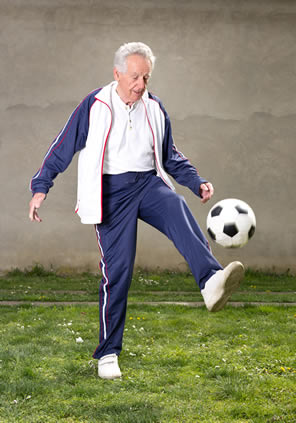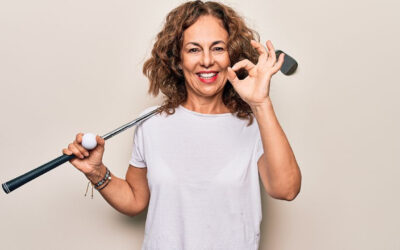Many people blame injuries and pain on their age. However, I’m here to tell you that you don’t need to give up sports just because you’re growing older. Sports themselves do not cause your injuries, either. Sports are not bad! We are designed to move and play for all of our days. Sadly, the number of people participating in local sporting events steadily drops off with age. Typically, most people who play sports are 30-39. The amount of players declines in the advancing decades.
So, why do less people participate in sports as they grow older? Many times it is because of pain with the activity. If the pain is not due to age or sport, what is the cause? Our misaligned bodies! Pain and injuries occur when we take our unbalanced bodies into sport and push ourselves athletically, beyond our body’s capabilities. That’s when breakdowns happen.
If you feel playing sports or age is causing your pain, I have some questions for you.
- Have you always hurt when you did that sport?
- If you answered no to the first question, what could be different now? (Besides age.)
- Can other people play that sport pain free? Does your body hurt symmetrically on your right and left sides? Is one side older?
If you didn’t always hurt, other people can play without pain, and only one side of your body hurts, how can the sport itself be the problem? It’s probably not.
Unfortunately, many of us do blame the activity for our injury, so we develop a strategy of avoidance. We have a fear of pain associated with the activity, and we protect ourselves from further discomfort by avoiding the offending movement. Many clients tell me things like, “I don’t run because it hurts my [insert body part here].” Yes, running–as well as any activity–hurts when done in a compromised position and using poor form, but you can change this. If you eliminate an activity every time you feel pain, you will eventually have only a very small circle of non-threatening movements and sports. But pain now during an activity does not mean pain forever. You can be active without pain!
It is the position and condition of the body we bring into sports that matters. In other words, the longer we have been playing, and the more injuries we have accrued, the more out of balance our bodies tend to become. Advancing years, then, increase the chances of our bodies being asymmetrical, but that can be improved. It is the body brought into sport that predicts a person’s sports performance and dictates the injury risk, not the sports we play, and not our age.
It’s true, as we get older, the sports we enjoy may change. Actually, I don’t do gymnastics anymore and can now enjoy a round of golf, which was way too boring and slow when I was younger. What is important is that you are able to continue moving and challenging yourself physically for life. Therefore, let’s take a vow of sports activity for our lifetime and start filling up those older age groups in our local races. Wouldn’t it be fantastic if the 60+ age group was bigger than the 20+ age group? I would love to see that day!
What athletic challenging are you planning for yourself this summer? Let me know! Leave a comment.



